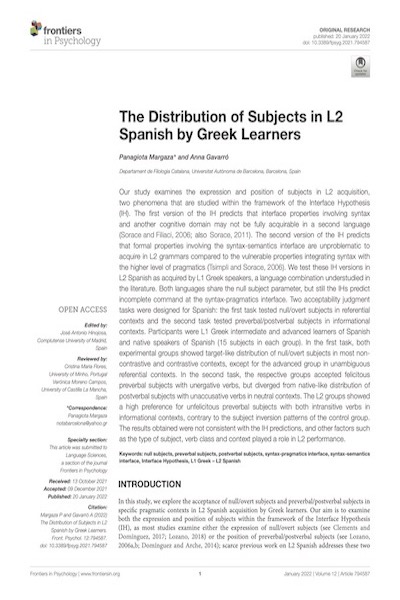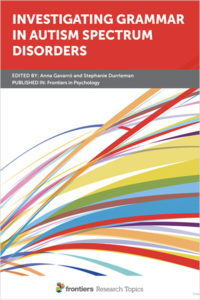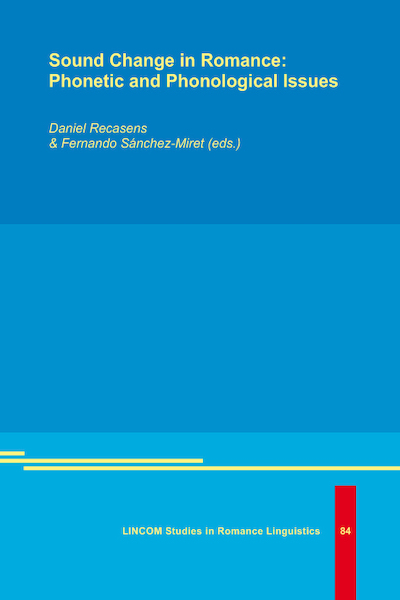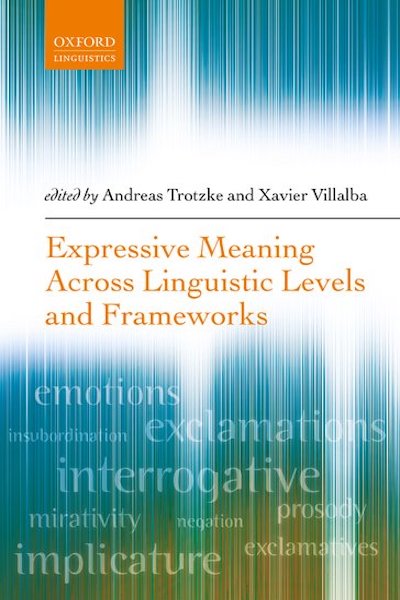
Autors:
Panagiota Margaza & Anna GavarróTítol:
The Distribution of Subjects in L2 Spanish by Greek LearnersEditorial: Frontiers in Psychology, Language Sciences
Col·lecció: Frontiers in Psychology
Data de publicació: 20 gener 2022
Text complet
Our study examines the expression and position of subjects in L2 acquisition, two phenomena that are studied within the framework of the Interface Hypothesis (IH). The first version of the IH predicts that interface properties involving syntax and another cognitive domain may not be fully acquirable in a second language (Sorace and Filiaci, 2006; also Sorace, 2011). The second version of the IH predicts that formal properties involving the syntax-semantics interface are unproblematic to acquire in L2 grammars compared to the vulnerable properties integrating syntax with the higher level of pragmatics (Tsimpli and Sorace, 2006). We test these IH versions in L2 Spanish as acquired by L1 Greek speakers, a language combination understudied in the literature. Both languages share the null subject parameter, but still the IHs predict incomplete command at the syntax-pragmatics interface. Two acceptability judgment tasks were designed for Spanish: the first task tested null/overt subjects in referential contexts and the second task tested preverbal/postverbal subjects in informational contexts. Participants were L1 Greek intermediate and advanced learners of Spanish and native speakers of Spanish (15 subjects in each group). In the first task, both experimental groups showed target-like distribution of null/overt subjects in most non-contrastive and contrastive contexts, except for the advanced group in unambiguous referential contexts. In the second task, the respective groups accepted felicitous preverbal subjects with unergative verbs, but diverged from native-like distribution of postverbal subjects with unaccusative verbs in neutral contexts. The L2 groups showed a high preference for unfelicitous preverbal subjects with both intransitive verbs in informational contexts, contrary to the subject inversion patterns of the control group. The results obtained were not consistent with the IH predictions, and other factors such as the type of subject, verb class and context played a role in L2 performance.












